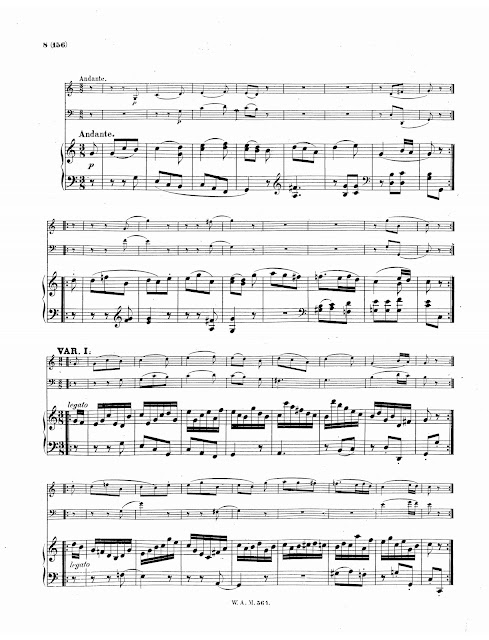DXXII. MOZART, Wolfgang Amadeus (1756-1791)
Piano Trio #6 in G Major, K. 564 (1788)
1. Allegro
2. Andante
3. Allegretto
Trio Fibonacci
(18:55)
The piano trio was an occasional opportunity for composers such as C.P.E. Bach to highlight the keyboard (a harpsichord) with the violin and cello providing simple accompaniment and coloration.
By this time, the mature 38-year-old Mozart -- with only a few years of life left to him -- took hold of the form and made it his own. No longer were the two stringed instruments the keyboard's sidekicks, but fully participated in the polyphony ... this is the sixth and final Piano Trio that he composed.
First movement
After a unison downbeat, the piano introduces the charming melody on the 3rd beat of the measure. After a cadence, the strings then respond, also on the 3rd beat.
Throughout, Mozart gives all three instruments an equal footing -- true chamber music.
Second movement
The theme and six variations are full of graceful simplicity, with each variation adding more complex elements -- the second variation gives the melody to the cello, and by the third variation he has added 16th-note triplets in the piano, coloring the theme in the strings. The fifth, switches to the minor (C) and gives the composer a chance to darken the atmosphere.
The final variation introduces sweeping 32nd-notes, in the piano and then the violin.







No comments:
Post a Comment